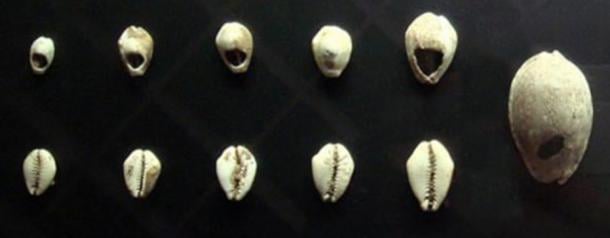🔴 Website 👉 https://u-s-news.com/
Telegram 👉 https://t.me/usnewscom_channel
Money, in its various forms, has been an integral part of human civilization for millennia. From the earliest systems of trade to the digital currencies of today, the evolution of money reflects the dynamic and complex nature of human societies. Understanding the history of money offers valuable insights into economic development, social organization, and technological innovation.
Exploring the history of money reveals how it has shaped—and been shaped by—cultural, political, and technological changes. It highlights humanity’s continual quest for efficiency, security, and trust in economic transactions. Join us as we delve into the origins and evolution of money, examining the pivotal moments and innovations that have defined its role in our world.
Chinese shell money from 3,000 years ago. (PHGCOM/ CC BY-SA)
From Paper to (Bit)Coin
Based on some historical evidence, the first type of money was allegedly used some 40,000 years ago. Still, if we talk about some newer civilizations for which we have stronger evidence, it’s a common scientific agreement that the first coins were created in China at the beginning of the 8th century BC.

Yuan dynasty era coins – the earliest silver standard monetary system. (PHGCOM / CC BY SA 3.0)
What might sound surprising is that only 70 years after that, the Chinese already made the early version of paper money. Obviously, it was easier to carry around paper bills than bags of coins. Each bill represented a certain amount of coins, and this ratio has been in use for the astonishing 2724-ish years.

The Jiaozi (left), along with its corresponding printing plate (right), emerged as a type of promissory banknote in the Sichuan capital of Chengdu, China, around the 11th century. Son Dynasty. Numismatists recognize it as the earliest form of paper money in recorded history. (Public Domain), (Popolon/CC BY-SA 4.0)
In the meantime, the first official currency in history was allegedly ordered by the Lydian king Alyattes and minted somewhere around 600 BC.
In the regions where tech advancements weren’t that modern even for the time, people relied on barter – they’d exchange goods for goods, milk for eggs, skin for wool, wood for fruit, etc.
In a way, there are some similarities with this today – we can exchange paper money and coins for gold or silver. What’s more, we can even exchange this fiat money for cryptocurrencies. With every new cryptocurrency emerging on the business horizon, this dynamic will be even stronger in the time ahead. Of course, crypto has a range of benefits that our ancestors weren’t privy to. There’s the privacy element for one, coupled with the ease of use and super low transaction costs.

The Lydian stater made its debut in the kingdom of Lydia more than 2,600 years ago. (Mark Cartwright/CC BY-NC-SA 4.0)
Gold Standard and the Nixon Shock
We’ve mentioned above that the paper money put in use in ancient China was actually the equivalent of a certain amount of coins.
Let’s now explain the major turning point in the modern history of monetary policies – the abandonment of the gold standard.
Over a period of time, leading economists across the world realized they needed an additional protective tool to avoid excessive volatility of money value.
That’s why in the early 19th century, the gold standard was introduced in several European countries – first in the UK, and by the end of the century in Germany, France, and the United States. Hence, the central banks in the countries that have adopted this standard were allowed to print only the amount of money equivalent to their gold reserves.

Abandoned at the dawn of World War I, this financial instrument was re-established in the 1920s, only to collapse during the Great Depression.
After World War II, the gold standard was introduced again, to ensure the stability of the global economy and harness inflation.
However, by the beginning of the 1970s, inflation kept galloping in spite of the gold standard. Many countries kept exchanging their dollars for gold, pumping too much money into the US economy. Hence, the inflation rates have grown significantly.
Eventually, the US decided to abandon the gold standard in 1971, through the measure known as ‘The Nixon Shock’, after President Richard Nixon.
Money in the Brave New World
Since the termination of the gold standard, some national governments and central banks have continued using this mechanism. Based on political and economic reasons, they print the equivalent of paper money and coins they have in their gold bars.
Others, however, release as much money as necessary for their domestic economies to function normally.
With the unprecedented progress of technical and technological solutions, we have so many options at our disposal – from cutting-edge bank cards (with enhanced biometric data) to digital wallets and blockchain.
The introduction of decentralized currencies – ready crypto – based on blockchain has disrupted all the known and usual norms, in both payments and investments. Now financial institutions and banks don’t have complete control over global transactions. They’re even used for purchasing groceries or crediting user accounts on offshore casinos.
What’s more, the advent of open banking, which allows third parties to access bank customers’ accounts with their consent, will further change the role and usability of money.
We can adapt to the innovations that suit our needs and make sure to stay secure in using our financial assets.
Top image: Left; Chinese shell money, Right; Close-Up shot of coins and bills . Source: Left; PHGCOM/ CC BY-SA) Right; Public Domain

